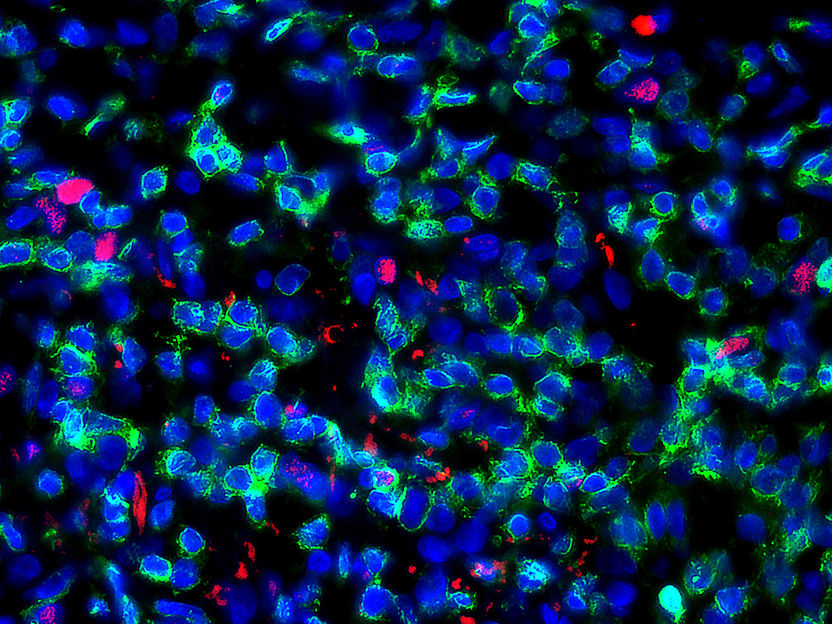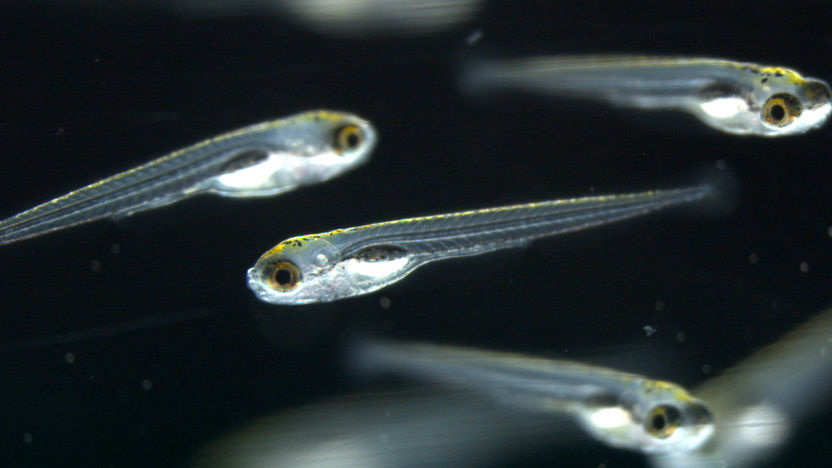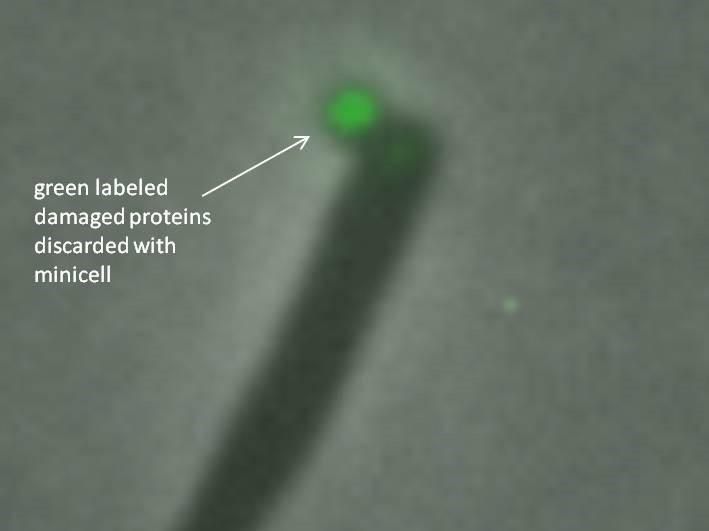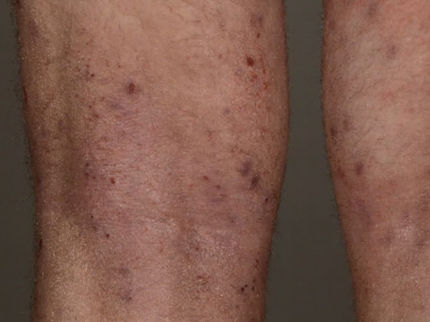Cellular metabolism as the key to treating allergic dermatitis?
The function of so-called “TH9” cells in humans remains elusive. These interleukin-9 (IL-9)-producing T helper (TH) cells play an important role in inflammatory reactions and tumor immunity in animal models. In order to better understand the role of TH9 cells in humans, Prof. Dr. Christoph Schlapbach and his research team at the Department of Dermatology at Inselspital and the Department for Biomedical Research at the University of Bern have examined these cells in greater depth.

The immunfluorescence shows TH cells (in green, CD4+) in the skin of a patient with acute allergic contact dermatitis. Several of these cells express the transcription factor PPAR-γ (in red).
Department of Dermatology, Inselspital, Bern University Hospital
Closely related allergy-inducing T cells
Most notably, the team discovered that TH9 cells are not a separate population, but rather a distinct subpopulation of the already known TH2 cells which contribute decisively to the induction of allergies. As a result, they were characterised as “IL-9+ TH2 cells”. Consistent with this interrelation, the researchers have found that this cell type is involved in such allergic skin diseases as atopic dermatitis (atopic eczema, neurodermatitis) or allergic contact eczema.
In order to understand how the new cells can be distinguished from conventional TH2 cells, the team carried out modern transcriptomic analyses. In the course of this, the transcription factor PPAR-γ was identified as an important regulator of IL-9+ TH2 cells. PPAR-γ is a well-known regulator of cellular metabolism, i.e. the processes occurring in cells to produce energy and biologic building blocks. Until now, the function of PPAR-γ in fat and muscle cells was known, but its function in TH cells has only recently been examined.
An old acquaintance and new therapeutic approaches
PPAR-γ has already been used as a therapeutic target for treating type 2 diabetes. The fact that it also plays a key role in IL-9+ TH2 cells therefore opens up new ways for treating such allergic skin diseases as neurodermatitis. “Because PPAR-y regulates the cells that have now been characterised, we might be able to manipulate this cell population with it,” explains Christoph Schlapbach. “It is therefore conceivable that already existing medications can be used to treat diseases in which IL-9+ TH cells are involved, a process called "drug repositioning”."
Before this hypothesis can be tested in initial clinical trials, the researchers now want to examine more closely how IL-9 and PPAR-y interact in allergic skin conditions. For this purpose, continuation studies are currently being carried out at the Department of Dermatology at Inselspital.
Original publication
Other news from the department science

Get the life science industry in your inbox
By submitting this form you agree that LUMITOS AG will send you the newsletter(s) selected above by email. Your data will not be passed on to third parties. Your data will be stored and processed in accordance with our data protection regulations. LUMITOS may contact you by email for the purpose of advertising or market and opinion surveys. You can revoke your consent at any time without giving reasons to LUMITOS AG, Ernst-Augustin-Str. 2, 12489 Berlin, Germany or by e-mail at revoke@lumitos.com with effect for the future. In addition, each email contains a link to unsubscribe from the corresponding newsletter.
Most read news
More news from our other portals
Last viewed contents
Centre_for_Infectious_Disease_Research_in_Zambia_(CIDRZ)
XYY_syndrome
Category:Perineum
Glomerulus

Larvae Help in Search for Appetite Suppressants - Zebrafish as a novel testing system for psychoactive substances
Glycogen_storage_disease
Spinocerebellar_ataxia_type-13

Bruker to acquire the NanoString business in an asset deal






















































